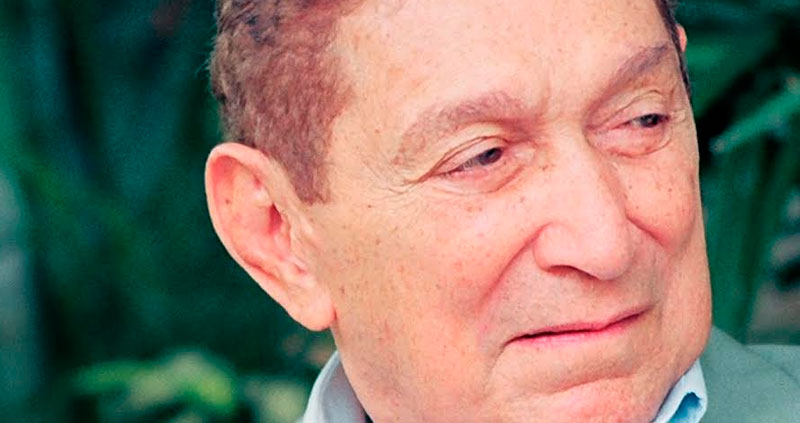Rafael Calixto Escalona Martínez, the greatest cultivator of Vallenato folklore, wrote the most beautiful page in the history of Caribbean man, from a very young age, when his name began to be known from village to village and his songs began to travel through the world of fame and immortality. Since then, the songs of Rafael Escalona became that skein that united the towns of the old Magdalena Grande, made up of La Guajira and the so-called Province of Padilla, which was nothing other than the great Vallenato Country where the towns of the south fit. from La Guajira and Cesar; represented in Valledupar and surrounding towns.
In my opinion, the first and greatest thing that Rafael Escalona did for Vallenato music was to take it out of the patios of the old mansions of La Provincia and take it to the Valledupar Club, where Vallenato songs were regarded as nothing. Only classical music was heard there. From that moment on, not only the peasants of the region sang and danced vallenatos, but also the literati began to not feel ashamed of dancing in public and singing a good vallenato at the top of their lungs. Afterwards, the boy continued with his audacity of taking any event that happened in the region to turn it into a song. Escalona did not respect anyone, much less any circumstance to sing the story, because he himself had already established as a rule that the daily events of the old Valley were not told, but rather sung.
In this way, Escalona’s melodies with their stories spread like a yawn from mouth to mouth, far beyond Bocas de Cenizas in the Colombian Caribbean, where Gabriel García Márquez found out about that bit of ‘bochinches’ that took place. there in Valledupar, synthesized in the songs of Rafael Escalona. Meanwhile, the same stories also traveled to the highlands carried by Hernando Molina, the son of one of the main characters ‘La Patillalera’, one of his songs. Dr. Molina, the Magistrate, the same one who did not change his hammock, not even for the governor’s chair. Hernandito the son, with great pride and emotion, took it upon himself to tell his fellow students, prominent people from Bogotá, about his cousin Escalona. He also sang her the songs and talked to her about the characters. That’s how all those students from Bogotá came to Valledupar on vacation to meet Escalona, party with him and get drunk with his songs.
Those same visitors took the trouble to make the journey from Valledupar to La Guajira above, where smuggling was born, to end in Santa Marta and visit the Liceo Celedón, that emblematic place that inspired Rafa’s most beautiful melodies and that managed to be recovered, after almost falling completely to pieces. In this way, his fame spread throughout Colombia, and he was invited to every folklore festival that was celebrated in the national territory. By then, he had the company of Nicolás ‘Colacho’ Mendoza; who was his driver, property manager, commissary manager, accordion player and even the pimp of his affairs.
The problem there was that people were no longer very happy that their love problems, events, marital fights, bank debts, skirt troubles and family complications in general were known to Rafael Escalona. That caused them panic since no one wanted to be the protagonist of one of his songs. The same thing happened to the retired soldier in the book ‘The Colonel has no one to write to him’, by Gabo, who flatly refused his wife’s pleas for her to go out by selling the old wall clock in order to survive; exclaiming that he was not going to go out with that on his back, and justifying his refusal with this phrase: “so that Escalona can make me a song.”
That was Escalona, who with a mere fifth of high school, got to know the world of literary figures, which allowed him to paint his own universe and bring people from all strata into that world and magnify them with his singing. An example of this was Juana Arias, Sabita, Miguel Canales, Tite Socarras, Urbanito Castro, the priest of the Custody of Badillo, Benavides of the wrinkles, and many other characters who, although they do not exist today, were immortalized in the poetry of ‘Rafa ‘ Step.
That is why I can affirm that Escalona was a chronicler of everyday life, telling the best chronicles and reports of a forgotten province, where those same characters, despite their simplicity, are great today, thanks to their songs. Escalona painted life in his own way and discovered the magic formula so that no one would ever forget him after his journey to eternity.
And boy did he achieve it! Because it is not easy to hold a house in the air in a lifetime and Escalona did it. It is not easy to turn a devil into a train and Escalona managed it. And it is less easy, to mythologize a region through verses, songs and poetry and that was not enough for him either; creating a school that many of those poets follow today, in whom his legacy is perpetuated. And most importantly, he achieved the feat of becoming immortal from his very life. Immortality that is evident today after fifteen years of absence; absence that hurts far beyond the soul, far beyond infinite love.
[email protected]
@tarynescalona
